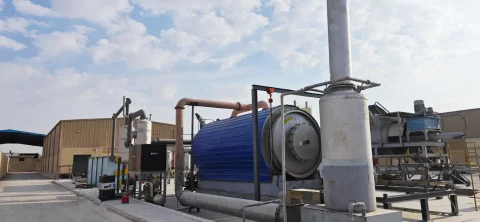Commercial pyrolysis systems are engineered to convert carbonaceous waste materials into valuable by-products such as fuel oil, syngas, and char. The selection of feedstock directly impacts the thermal conversion efficiency, output quality, and operational continuity of pyrolysis machinery. In large-scale installations—including continuous pyrolysis plant configurations and thermal desorption units (TDU unit)—feedstock compatibility is essential for economic viability and environmental compliance.
End-of-Life Plastics
Plastics, particularly polyolefins such as polyethylene (PE), polypropylene (PP), and polystyrene (PS), represent a high-yield input for plastic into fuel machine systems. These materials are hydrocarbon-rich and offer high calorific values, making them ideal for thermal cracking. During pyrolysis, long polymer chains are broken down into shorter hydrocarbons, yielding liquid fuel and light gases suitable for energy generation or further refining.
However, not all plastic types are ideal. Polyvinyl chloride (PVC) and polyethylene terephthalate (PET) contain halogens and oxygenated compounds, respectively, which require complex gas cleaning systems to handle corrosive emissions and by-products. For commercial operations, pre-sorting and pretreatment are critical to maintaining equipment longevity and meeting emission thresholds.

Waste Tyres
Waste tyres are a prevalent feedstock due to their consistent availability and high fixed carbon content. Each tyre comprises natural rubber, synthetic polymers, steel, and textile fibers, all of which are efficiently processed in a continuous pyrolysis plant. The rubber component breaks down into pyrolysis oil, carbon black, and combustible gas, while embedded steel wire is recovered post-discharge.
Tyres require minimal preprocessing and can be shredded to improve surface area and feeding uniformity. Their dense structure and thermal behavior make them suitable for high-throughput systems where continuous feeding and discharging cycles are maintained without system interruption.

Oil Sludge and Oily Waste
In industries such as petrochemicals, drilling, and refining, oily sludge and refinery tank bottom residues pose significant disposal challenges. These viscous materials are increasingly being processed in a tdu unit, which applies indirect heating in a low-oxygen environment to recover hydrocarbons and minimize toxic residues.
Due to high moisture and volatile organic compound (VOC) content, oily waste requires precise temperature control and advanced gas scrubbing systems. The pyrolysis of oil sludge not only reduces hazardous waste volume but also enables energy recovery, turning waste liabilities into economic assets.
Conclusion
Feedstock selection in pyrolysis operations must balance availability, composition, processing behavior, and output marketability. Whether processing synthetic polymers in a plastic into fuel machine, rubber in a continuous pyrolysis plant, or industrial sludge in a tdu unit, each material presents unique thermal and chemical profiles. Commercial pyrolysis machinery must be calibrated to handle this variability while maintaining high recovery rates, operational stability, and environmental performance.
